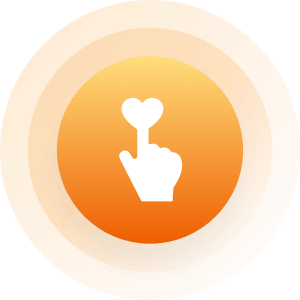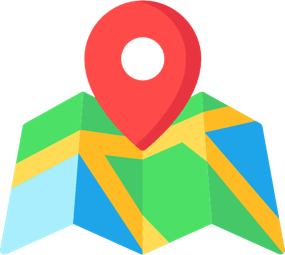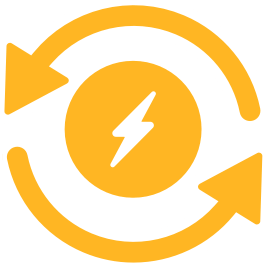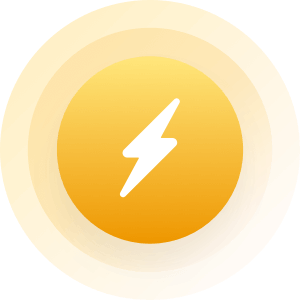| Topic: meteor impact caculator | |
|---|---|
|
This site is fun. You select all the parameters of a meteor or asteroid impact and it tells you the damage.
http://impact.ese.ic.ac.uk/cgi-bin/crater.cgi?dist=2&distanceUnits=2&diam=500&diameterUnits=3&pdens=&pdens_select=3000&vel=6&velocityUnits=2&theta=45&wdepth=50&wdepthUnits=1&tdens=2500 |
|
|
|
|
|
Cute... However the authors missed an important point.
How much 'damage' to Earth systems (geology, meterological, and of course human) if it was larger than 300 meters and crossed our orbit at less then 70,000 miles. Its gravational 'intanglements' with the gravity of earth would wreak havoc with our tectonic plates and atmosphere... It does not have to hit us to f up our day, indeed it might just mess up our century. |
|
|
|
|
|
LOOK I DONT KNOW IF THIS IS WHAT THE CONVO IS ABOUT BUT IN ALL HONESTY IF A METEOR WERE TO HIT TWO THING ARE FOR SURE THE GOV WOULD NEVER TELL US SO WE DONT DIE IN MASS CONFUSION AND TWO WE WOULD PRBLY HAVE SEEN IT BY NOW BUT I THINK ITS COMING AND GOD HELP US ALL STOCK UP ON WATER LOTS OF IT EVEN IF NOTHING HAPPENS YOULL BE WELL PERPARED
|
|
|
|
|
|
LOOK I DONT KNOW IF THIS IS WHAT THE CONVO IS ABOUT BUT IN ALL HONESTY IF A METEOR WERE TO HIT TWO THING ARE FOR SURE THE GOV WOULD NEVER TELL US SO WE DONT DIE IN MASS CONFUSION AND TWO WE WOULD PRBLY HAVE SEEN IT BY NOW BUT I THINK ITS COMING AND GOD HELP US ALL STOCK UP ON WATER LOTS OF IT EVEN IF NOTHING HAPPENS YOULL BE WELL PERPARED We are hit every day. The small ones don't hurt much. |
|
|
|
|
|
|
|
|
did yall know the government tracks anything in our orbit 10cm or bigger? they have over 10,000 objects on file...
from http://science.nasa.gov/science-news/science-at-nasa/2007/23jan_ltps/ NORAD tracks more than 10,000 Earth-orbiting objects wider than 10 cm. "Some of them are bound to cross in front of the Moon while we're watching," he says. Objects like Orbcomm are easy to identify as satellites. Tumbling space debris, on the other hand, can be trickier: "A sudden glint of sunlight from a flat surface looks an awful lot like a lunar meteor flash," he explains. "So we have to be very careful. When we see a flash of light on the Moon, we always double-check that there was no piece of space junk passing by at that exact moment." so i think could tell if something was going to hit us, and when and where... |
|
|
|
|
|
We can track the objects in near earth orbit fairly easily. Asteroids of significant size come zooming by unexpectedly on a regular (or irregular) basis. There is a greater chance of you dying from an asteroid impact than flying in some planes.
There are several different types of danger from asteroid impact. There are the known near Earth orbiters that we know of that may hit us as their orbits change slightly from year to year. There are Oort Cloud and Kieper Belt objects that are in elliptical orbit that we don't see often enough to track or even know about. And there are the rogue asteroids and comets that may just be passing through where we would have little warning due to a possible much higher velocity than most of the objects in our solar system. The Russians have been pushing for us to build a system to defend the Earth against an unexpected asteroid strike. The only warning we would get of such an asteroid is if someone happens to see it coming. There is a 100% chance that the Earth will be hit by an asteroid or comet big enough to kill most life on earth. It is just a matter of when. |
|
|
|
|
|
I thought you would like it! |
|
|
|
|
|
We can track the objects in near earth orbit fairly easily. Asteroids of significant size come zooming by unexpectedly on a regular (or irregular) basis. There is a greater chance of you dying from an asteroid impact than flying in some planes. There are several different types of danger from asteroid impact. There are the known near Earth orbiters that we know of that may hit us as their orbits change slightly from year to year. There are Oort Cloud and Kieper Belt objects that are in elliptical orbit that we don't see often enough to track or even know about. And there are the rogue asteroids and comets that may just be passing through where we would have little warning due to a possible much higher velocity than most of the objects in our solar system. The Russians have been pushing for us to build a system to defend the Earth against an unexpected asteroid strike. The only warning we would get of such an asteroid is if someone happens to see it coming. There is a 100% chance that the Earth will be hit by an asteroid or comet big enough to kill most life on earth. It is just a matter of when. It dosen't have to hit us. It just has to pass by close enough to 'entangle' the two gravitational 'influences' (ours and the asteriods). If it is large enough it will destablize our geological plates and create massive and possibly catastrophic (to humans) 'side effects'. I calculated some of the effects. An asteriod that is 100 meters in diameter and crosses earth orbit at 90,000 kilometers has a better than 90% chance of triggering a mag 9 or greater earthquake along existing faults, create sudden 'rogue' tidal forces in the oceans it passes over, and may even create tidal forces in the sub surface magma... IT DOES NOT HAVE TO HIT US TO CAUSE MAJOR 'SIDE EFFECTS'. |
|
|
|
|
|
We can track the objects in near earth orbit fairly easily. Asteroids of significant size come zooming by unexpectedly on a regular (or irregular) basis. There is a greater chance of you dying from an asteroid impact than flying in some planes. There are several different types of danger from asteroid impact. There are the known near Earth orbiters that we know of that may hit us as their orbits change slightly from year to year. There are Oort Cloud and Kieper Belt objects that are in elliptical orbit that we don't see often enough to track or even know about. And there are the rogue asteroids and comets that may just be passing through where we would have little warning due to a possible much higher velocity than most of the objects in our solar system. The Russians have been pushing for us to build a system to defend the Earth against an unexpected asteroid strike. The only warning we would get of such an asteroid is if someone happens to see it coming. There is a 100% chance that the Earth will be hit by an asteroid or comet big enough to kill most life on earth. It is just a matter of when. It dosen't have to hit us. It just has to pass by close enough to 'entangle' the two gravitational 'influences' (ours and the asteriods). If it is large enough it will destablize our geological plates and create massive and possibly catastrophic (to humans) 'side effects'. I calculated some of the effects. An asteriod that is 100 meters in diameter and crosses earth orbit at 90,000 kilometers has a better than 90% chance of triggering a mag 9 or greater earthquake along existing faults, create sudden 'rogue' tidal forces in the oceans it passes over, and may even create tidal forces in the sub surface magma... IT DOES NOT HAVE TO HIT US TO CAUSE MAJOR 'SIDE EFFECTS'. Your math is wrong. A 100 meter rock is small and would do nothing at that distance. It took a seven mile diameter rock with a direct hit to kill the dinosaurs 65 million years ago. |
|
|
|
|
|
We can track the objects in near earth orbit fairly easily. Asteroids of significant size come zooming by unexpectedly on a regular (or irregular) basis. There is a greater chance of you dying from an asteroid impact than flying in some planes. There are several different types of danger from asteroid impact. There are the known near Earth orbiters that we know of that may hit us as their orbits change slightly from year to year. There are Oort Cloud and Kieper Belt objects that are in elliptical orbit that we don't see often enough to track or even know about. And there are the rogue asteroids and comets that may just be passing through where we would have little warning due to a possible much higher velocity than most of the objects in our solar system. The Russians have been pushing for us to build a system to defend the Earth against an unexpected asteroid strike. The only warning we would get of such an asteroid is if someone happens to see it coming. There is a 100% chance that the Earth will be hit by an asteroid or comet big enough to kill most life on earth. It is just a matter of when. It dosen't have to hit us. It just has to pass by close enough to 'entangle' the two gravitational 'influences' (ours and the asteriods). If it is large enough it will destablize our geological plates and create massive and possibly catastrophic (to humans) 'side effects'. I calculated some of the effects. An asteriod that is 100 meters in diameter and crosses earth orbit at 90,000 kilometers has a better than 90% chance of triggering a mag 9 or greater earthquake along existing faults, create sudden 'rogue' tidal forces in the oceans it passes over, and may even create tidal forces in the sub surface magma... IT DOES NOT HAVE TO HIT US TO CAUSE MAJOR 'SIDE EFFECTS'. Your math is wrong. A 100 meter rock is small and would do nothing at that distance. It took a seven mile diameter rock with a direct hit to kill the dinosaurs 65 million years ago. and no one mentions the changes that would have taken place as that asteriod approached. It was not the impact alone that caused the damage. It was also the approach which would have destablised portions of the current weather patterns, ocean tidal forces, geophysical stability and geomagnetic fields from the moment it came close enough for its gravitationl influence to affect the local (Earth/Moon) gravitational interaction. My math is not wrong. Do it yourself. A 100 meter asteroid has enough gravitional 'impact' at 90,000 kilometers to cause an 'unstable' fault to fracture. It has enough 'impact' to create rogue tidal forces in the oceans. (at 30,000 kilometers it can create as much as a 24 FOOT rogue wave in the ocean directly 'below' its passage)... |
|
|
|
|
|
Edited by
metalwing
on
Mon 03/28/11 09:24 PM
|
|
|
We can track the objects in near earth orbit fairly easily. Asteroids of significant size come zooming by unexpectedly on a regular (or irregular) basis. There is a greater chance of you dying from an asteroid impact than flying in some planes. There are several different types of danger from asteroid impact. There are the known near Earth orbiters that we know of that may hit us as their orbits change slightly from year to year. There are Oort Cloud and Kieper Belt objects that are in elliptical orbit that we don't see often enough to track or even know about. And there are the rogue asteroids and comets that may just be passing through where we would have little warning due to a possible much higher velocity than most of the objects in our solar system. The Russians have been pushing for us to build a system to defend the Earth against an unexpected asteroid strike. The only warning we would get of such an asteroid is if someone happens to see it coming. There is a 100% chance that the Earth will be hit by an asteroid or comet big enough to kill most life on earth. It is just a matter of when. It dosen't have to hit us. It just has to pass by close enough to 'entangle' the two gravitational 'influences' (ours and the asteriods). If it is large enough it will destablize our geological plates and create massive and possibly catastrophic (to humans) 'side effects'. I calculated some of the effects. An asteriod that is 100 meters in diameter and crosses earth orbit at 90,000 kilometers has a better than 90% chance of triggering a mag 9 or greater earthquake along existing faults, create sudden 'rogue' tidal forces in the oceans it passes over, and may even create tidal forces in the sub surface magma... IT DOES NOT HAVE TO HIT US TO CAUSE MAJOR 'SIDE EFFECTS'. Your math is wrong. A 100 meter rock is small and would do nothing at that distance. It took a seven mile diameter rock with a direct hit to kill the dinosaurs 65 million years ago. and no one mentions the changes that would have taken place as that asteriod approached. It was not the impact alone that caused the damage. It was also the approach which would have destablised portions of the current weather patterns, ocean tidal forces, geophysical stability and geomagnetic fields from the moment it came close enough for its gravitationl influence to affect the local (Earth/Moon) gravitational interaction. My math is not wrong. Do it yourself. A 100 meter asteroid has enough gravitional 'impact' at 90,000 kilometers to cause an 'unstable' fault to fracture. It has enough 'impact' to create rogue tidal forces in the oceans. (at 30,000 kilometers it can create as much as a 24 FOOT rogue wave in the ocean directly 'below' its passage)... You have some good ideas. This isn't one of them. Here is a calculator. http://easycalculation.com/physics/classical-physics/newtons-law.php |
|
|
|
|
|
Edited by
AdventureBegins
on
Mon 03/28/11 09:52 PM
|
|
|
Nice calculator...
It does not take into account the sudden introduction of a moving gravitational mass into a 'stable' system. It does not take into account the fact that the earths gravitational 'field' is composed of the 'fields' of 9 seperate (yet 'tangled') masses. (7 'continents, a 'core', and a mass of water - each of which will react to the 'new' gravitationl field separatly from each other). When a fault line on Earth is close to 'slippage' such a small mass point becomes like the straw that is more than the camel can endure. It creates a sudden 'shock' (although but a small one) that has probabilities of generating the effects I mentioned. (the probability goes up the closer the 'close approach' point is). I have built a calculator of my own. You should see the probabilities of damage of a 300 meter asteroid at 30,000 to 90,000 kilometer close approach. It could be quite catastrophic. It will happen in 2029 (with a 96% chance of generating an earth movement greater than 10 magnitude). If you do some research you might find that such an event has happend in the recent past... Where the 'close approach' of a 'small' object inside the orbit of the Moon has occured in conjuction with a large earthquake and or sudden departure from normal of weather patterns. But feel free to discount my work. My model actually predicted some of them. Like the Chilean earthquake... But I was ignored when I tried to warn people about it. |
|
|
|
|
|
Edited by
AdventureBegins
on
Fri 04/01/11 07:31 PM
|
|
|
Proof is comming.
We are entering a 'swarm'.(sizes range from 10 meters to 100 meters). Bet the weather patterns reflect 'chaos' (do not follow predicted patterns). Bet we see an increase in earthquakes. |
|
|
|
|
|
i have read about the sun having a companion star, and i have found there are about 8 stars that will be close enough to our solar system to cause a disruption in the ort cloud and send meteors headed our way... they even speculate thats what causes major planetary extictions every 30 million years or so...
|
|
|
|
|
|
We can track the objects in near earth orbit fairly easily. Asteroids of significant size come zooming by unexpectedly on a regular (or irregular) basis. There is a greater chance of you dying from an asteroid impact than flying in some planes. There are several different types of danger from asteroid impact. There are the known near Earth orbiters that we know of that may hit us as their orbits change slightly from year to year. There are Oort Cloud and Kieper Belt objects that are in elliptical orbit that we don't see often enough to track or even know about. And there are the rogue asteroids and comets that may just be passing through where we would have little warning due to a possible much higher velocity than most of the objects in our solar system. The Russians have been pushing for us to build a system to defend the Earth against an unexpected asteroid strike. The only warning we would get of such an asteroid is if someone happens to see it coming. There is a 100% chance that the Earth will be hit by an asteroid or comet big enough to kill most life on earth. It is just a matter of when. AT the risk of being ridiculed a bit more... I notice a while back a comet collision with Jupiter. I build games. I built a 'game' where such a thing happened (using a phyicis capable 'game engine'). That game produced a strange result. Pieces of the comet broke apart from the mass and where 'kicked' all over the solar system by Jupiter's orbital dynamics (lots of gravitational fields). Some of the 'fragments' where 'redirected' in the general direction of Earth orbit. Some scattered. Some were directed towards Mars. A few of the 'fragements' would have crossed Earth orbit at or about the years 2009 - 2011. (my program was not good enough to give 'exact' data). A few of the 'fragements' used Mars for a 'gravity assist' and would be approaching the Earth... Right about now. They cause 'local' disturbances in the IP fields near earth when they pass (must be 'metallic' or some such ores). |
|
|
|
|
|
Your computer game predicted shards of comets to hit Earth? Cool. Let's use the impact calculator to see how much damage. Tell us how big the chunks are and we can guess the rest.Do you have a velocity?
|
|
|
|
|
|
It showed only small fragments to actually hit the surface of the earth.
Most 'crossed' our orbit well away from us. Some crossed withing 9 LD. Several crossed withing 1 LD. Some 'grazed' or 'hit' our atmosphere. What they will do this time I have no clue. My model is not accurate enough to give exact orbital parameters... Just 'probabilities'. |
|
|
|
|
|
|
|
|
Nice link...
However it lists only the CONFIRMED (i.e. also calculated by another agency or recognized group) PHA's. There are 26 newly discovered but not confirmed PHA's that are in close suspected close approach... So they are not on the list. As I posted earlier... A swarm comes. |
|
|
|
|










